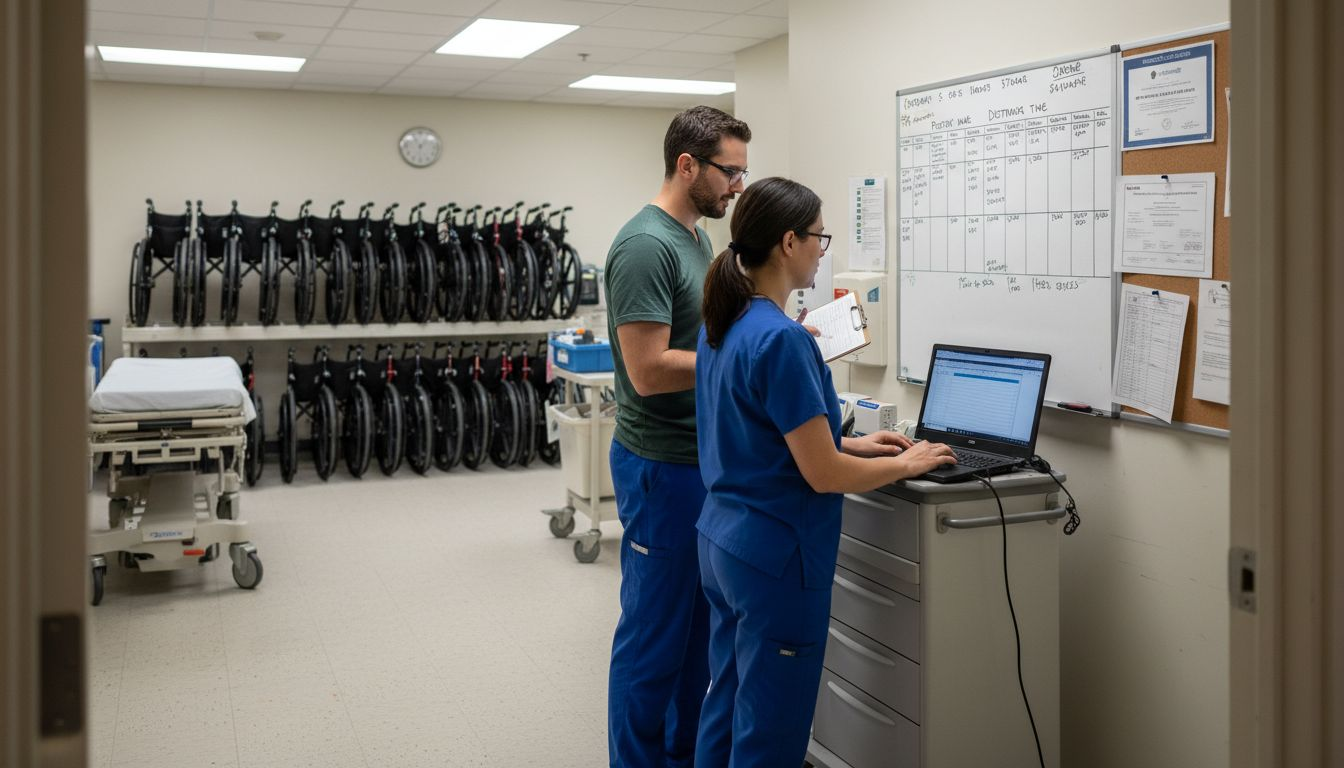Automation in Healthcare Administration: Benefits and Trends for 2025
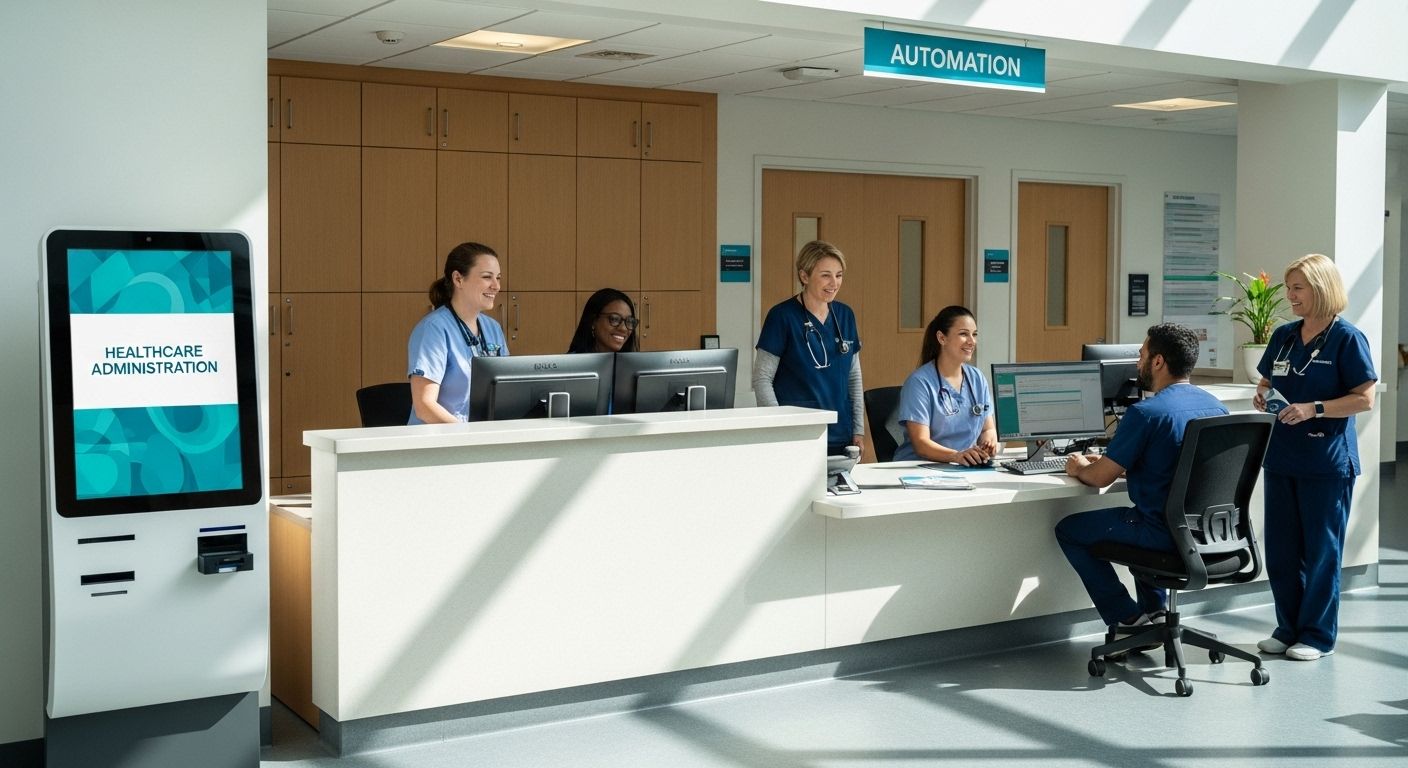
Automating healthcare administration is more than a tech upgrade. Hospitals are now seeing up to 60 percent cost reductions by using automated systems for billing and patient registration. Most people expect technology to slow things down with confusing menus and lost data, but the opposite is happening. Automation is actually freeing up medical staff for patient care instead of paperwork, and this trend is hitting every sector from big-city hospitals to home health services.
Table of Contents
- Key Benefits of Healthcare Administration Automation
- Top Use Cases for Different Healthcare Sectors
- Challenges and Solutions When Implementing Automation
- Future Trends in Healthcare Administration Automation
Quick Summary
| Takeaway | Explanation |
|---|---|
| Automation reduces administrative costs significantly. | Healthcare organizations can cut costs by up to 60% through automation in tasks like patient registration and billing. |
| AI enhances operational decision-making capabilities. | AI-powered systems can predict issues and optimize resource allocation, enabling smarter, faster decision-making in healthcare administration. |
| User-centered design improves automation adoption. | Involving healthcare professionals in the automation design process helps to create user-friendly systems, increasing acceptance and efficacy. |
| Unified platforms streamline healthcare workflows. | Comprehensive management solutions integrate clinical and administrative functions, providing real-time insights and reducing operational silos. |
| Data analytics drives personalized patient care. | Advanced data tools transform information into actionable insights, enhancing patient experiences and operational efficiencies. |
Key Benefits of Healthcare Administration Automation
Healthcare administration automation represents a transformative approach to managing complex operational challenges within medical systems. By implementing intelligent technological solutions, healthcare organizations can dramatically improve efficiency, reduce errors, and optimize resource allocation.
Operational Efficiency and Cost Reduction
Automation in healthcare administration delivers substantial operational improvements. Research from Experian reveals that automated systems can significantly reduce administrative costs and minimize billing errors. Organizations implementing comprehensive automation strategies can reduce processing times by up to 60%, freeing medical staff to focus on patient care rather than paperwork.
Key efficiency gains include streamlined patient registration, automated insurance verification, and intelligent scheduling systems. These technologies eliminate manual data entry, reduce human error, and accelerate administrative workflows. According to GHX Healthcare, automation optimizes human resources by alleviating staff from repetitive tasks, which directly enhances overall organizational productivity.
Enhanced Compliance and Data Security
Healthcare administration automation provides robust mechanisms for maintaining regulatory compliance and protecting sensitive patient information. Automated systems create comprehensive audit trails, ensure consistent documentation, and minimize risks associated with manual record keeping. Advanced AI-powered platforms can automatically flag potential compliance issues, reducing the likelihood of regulatory violations.
Modern automation tools incorporate advanced encryption and secure access protocols, ensuring patient data remains protected throughout administrative processes. By centralizing and standardizing data management, healthcare organizations can maintain higher levels of security and integrity in their information systems.
Additionally, for more insights into technology empowering healthcare professionals, explore our comprehensive guide on technological innovations in medical administration.
Automation in healthcare administration is not just a technological upgrade but a strategic transformation. As healthcare systems become increasingly complex, these intelligent solutions provide the necessary framework for efficient, secure, and patient-centric operations. By embracing automation, organizations can create more responsive, accurate, and cost-effective administrative environments that ultimately support superior patient care.
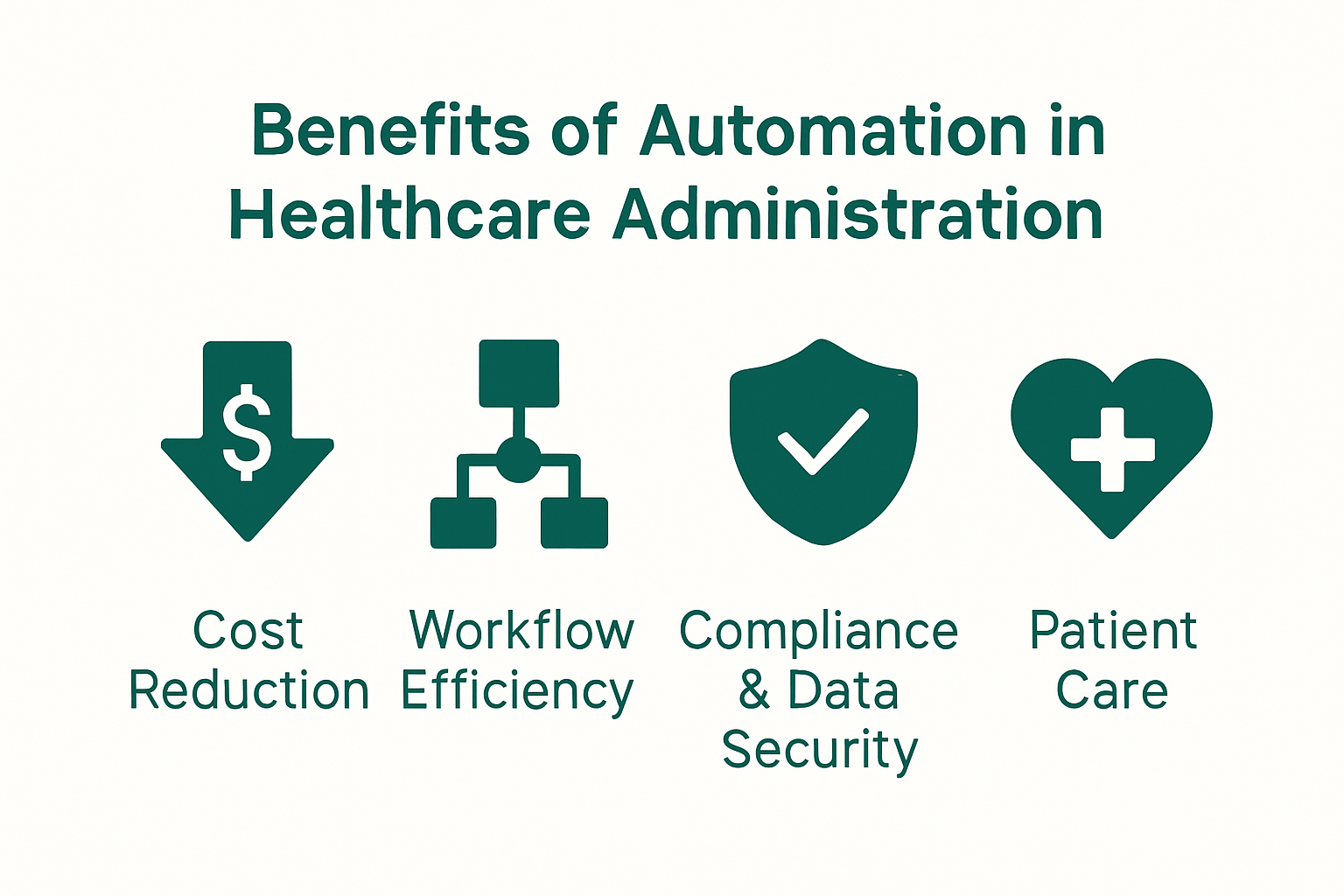
Top Use Cases for Different Healthcare Sectors
Healthcare administration automation is rapidly transforming operational strategies across diverse medical sectors, offering targeted solutions that address unique challenges and streamline complex workflows. Each healthcare segment presents distinct opportunities for technological intervention, enabling more efficient and precise administrative processes.
Hospital and Acute Care Automation
Research from RAND highlights critical automation use cases in hospital settings, focusing on patient intake, revenue cycle management, and population health reporting. Hospitals can significantly reduce administrative overhead by implementing intelligent automation technologies that handle patient registration, insurance verification, and claims processing with unprecedented accuracy.
Automated systems in acute care environments enable real-time tracking of patient flow, optimize bed management, and provide comprehensive insights into operational efficiency. These technologies help healthcare administrators make data-driven decisions, reduce waiting times, and improve overall patient experience. According to the Journal of Medical Systems, automation can reduce administrative processing times by up to 50% in complex hospital environments.
Below is a table comparing automation use cases across different healthcare sectors to help visualize their distinct benefits and applications.
| Sector | Key Automation Use Cases | Primary Benefits |
|---|---|---|
| Hospital and Acute Care | Patient registration, Insurance verification, Claims processing, Bed management | Reduced overhead, Improved patient flow, Faster processing times |
| Ambulatory/Outpatient Services | Appointment scheduling, Patient communication, Medical record management | Fewer no-shows, Better engagement, Efficient communication |
| Home Health and Remote Care | Remote monitoring, Equipment logistics, Care coordination | Personalized care, Responsive service, Secure record management |
Ambulatory and Outpatient Service Automation
Outpatient and ambulatory services benefit substantially from automation technologies that streamline appointment scheduling, patient communication, and medical record management. Intelligent scheduling systems can automatically optimize provider calendars, send appointment reminders, and manage patient rescheduling with minimal human intervention.
Additionally, read more about accelerating patient logistics solutions, which can transform how medical practices manage their administrative workflows. Automation in these settings helps reduce no-show rates, improve patient engagement, and create more efficient communication channels between healthcare providers and patients.
Home Health and Remote Care Automation
The growth of telehealth and home health services has created unique opportunities for administrative automation. Automated systems can manage remote patient monitoring, track medical equipment logistics, coordinate care teams, and ensure seamless communication between patients, caregivers, and healthcare providers.
These technologies enable more personalized and responsive care models, allowing healthcare organizations to extend their service capabilities while maintaining operational efficiency. Automated platforms can handle complex scheduling requirements, manage patient records securely, and provide real-time updates to care teams.
As healthcare continues to evolve, automation will play an increasingly critical role in transforming administrative processes across all sectors. By embracing these technological solutions, healthcare organizations can create more responsive, accurate, and patient-centric administrative environments that support superior care delivery.
Challenges and Solutions When Implementing Automation
Healthcare organizations face complex challenges when integrating automation technologies into their existing administrative infrastructure. Understanding these obstacles and developing strategic approaches is critical for successful implementation and sustainable technological transformation.
Organizational Change Management
Research from healthcare leadership studies reveals that implementing automation requires more than technological investment. Organizations must develop comprehensive change management strategies that address cultural resistance and professional adaptation. Healthcare leaders must create transparent communication channels, provide robust training programs, and demonstrate the tangible benefits of automation to gain staff acceptance.
Successful change management involves multiple strategic approaches. This includes creating cross-functional implementation teams, developing phased rollout plans, and establishing continuous feedback mechanisms. By involving healthcare professionals in the automation design process, organizations can mitigate potential resistance and create more user-centric technological solutions.
Technical Integration and Data Integrity
A critical study on Electronic Health Records highlights the paramount importance of maintaining data integrity during automation implementation. Healthcare organizations must ensure seamless integration between new automated systems and existing technological infrastructure, preventing data fragmentation and maintaining comprehensive patient information continuity.
Technical challenges include interoperability between different software platforms, ensuring secure data transmission, and maintaining consistent data standards. Healthcare IT teams must develop robust integration protocols that allow automated systems to communicate effectively across various departmental platforms while maintaining stringent security and privacy standards.
Human-Centered Design and Workflow Optimization
Ergonomic research in healthcare automation emphasizes the critical role of human-centered design principles. Successful automation implementation requires careful consideration of existing workflow dynamics, user experience, and professional practices. Automated systems must enhance rather than disrupt existing healthcare administrative processes.
Healthcare organizations should invest in user experience design, conducting comprehensive workflow analyses and pilot testing before full-scale implementation. This approach ensures that automation technologies are intuitive, efficient, and aligned with healthcare professionals’ practical needs. By prioritizing human factors in technological design, organizations can create more adaptive and user-friendly automated solutions.
Below is a summary table of core implementation challenges and strategies highlighted in the content to guide organizations through automation adoption.
| Implementation Challenge | Description | Key Strategies |
|---|---|---|
| Organizational Change Management | Overcoming cultural resistance and adapting staff to new tech | Transparent communication, Training programs, Cross-functional teams |
| Technical Integration & Data Integrity | Ensuring seamless system interoperability and consistent data standards | Robust protocols, Secure data transmission, Integration planning |
| Human-Centered Design & Workflow | Aligning automation with actual healthcare workflows and user needs | Workflow analysis, Pilot testing, UX design focus |
Implementing automation in healthcare administration is a complex but transformative journey. Organizations that approach technological integration strategically, prioritizing change management, technical integrity, and human-centered design, can successfully navigate the challenges and unlock significant operational improvements. The future of healthcare administration lies in creating intelligent, adaptive systems that support and enhance human capabilities rather than replacing them.
Future Trends in Healthcare Administration Automation
Healthcare administration automation is rapidly evolving, driven by technological advancements and the increasing need for operational efficiency. As we approach 2025, several transformative trends are set to reshape how healthcare organizations manage administrative processes and deliver patient care.
AI-Powered Administrative Intelligence
Research from the Healthcare Administration Leadership & Management Journal highlights the profound impact of artificial intelligence in transforming healthcare operations. AI-powered systems are expected to go beyond simple task automation, creating intelligent platforms that can predict administrative challenges, optimize resource allocation, and provide predictive insights into organizational workflows.
These advanced AI systems will enable healthcare administrators to make more data-driven decisions, reducing operational inefficiencies and anticipating potential bottlenecks before they occur. Virtual AI assistants will become increasingly sophisticated, handling complex administrative tasks such as patient scheduling, insurance verification, and resource management with unprecedented accuracy and speed.
Unified Medical Practice Management Platforms
According to Medical Practice Management research, the future of healthcare administration lies in comprehensive, all-in-one software solutions. These platforms will integrate clinical and administrative operations into seamless, unified systems that provide real-time insights and streamline multiple organizational functions.
Key features of these emerging platforms include integrated dashboards, automated patient communication systems, instant eligibility verification, and comprehensive reporting tools. Learn more about transforming administrative reliability, which demonstrates how technological integration can significantly improve operational efficiency.
Data-Driven Decision Making
Southern Nazarene University’s research emphasizes the critical role of advanced data analytics in future healthcare administration. Healthcare organizations will increasingly rely on sophisticated data interpretation tools that can transform raw information into actionable strategic insights.
Administrators will need to develop advanced skills in data analysis, utilizing machine learning algorithms to understand complex patterns in patient care, operational efficiency, and resource management. These data-driven approaches will enable more personalized patient experiences, more efficient resource allocation, and more proactive healthcare delivery models.
The future of healthcare administration automation is not about replacing human professionals but empowering them with intelligent technological tools. By embracing these emerging trends, healthcare organizations can create more responsive, efficient, and patient-centered administrative ecosystems that adapt quickly to changing healthcare landscapes. The integration of AI, comprehensive management platforms, and advanced data analytics will revolutionize how healthcare services are managed and delivered, ultimately improving both operational efficiency and patient outcomes.
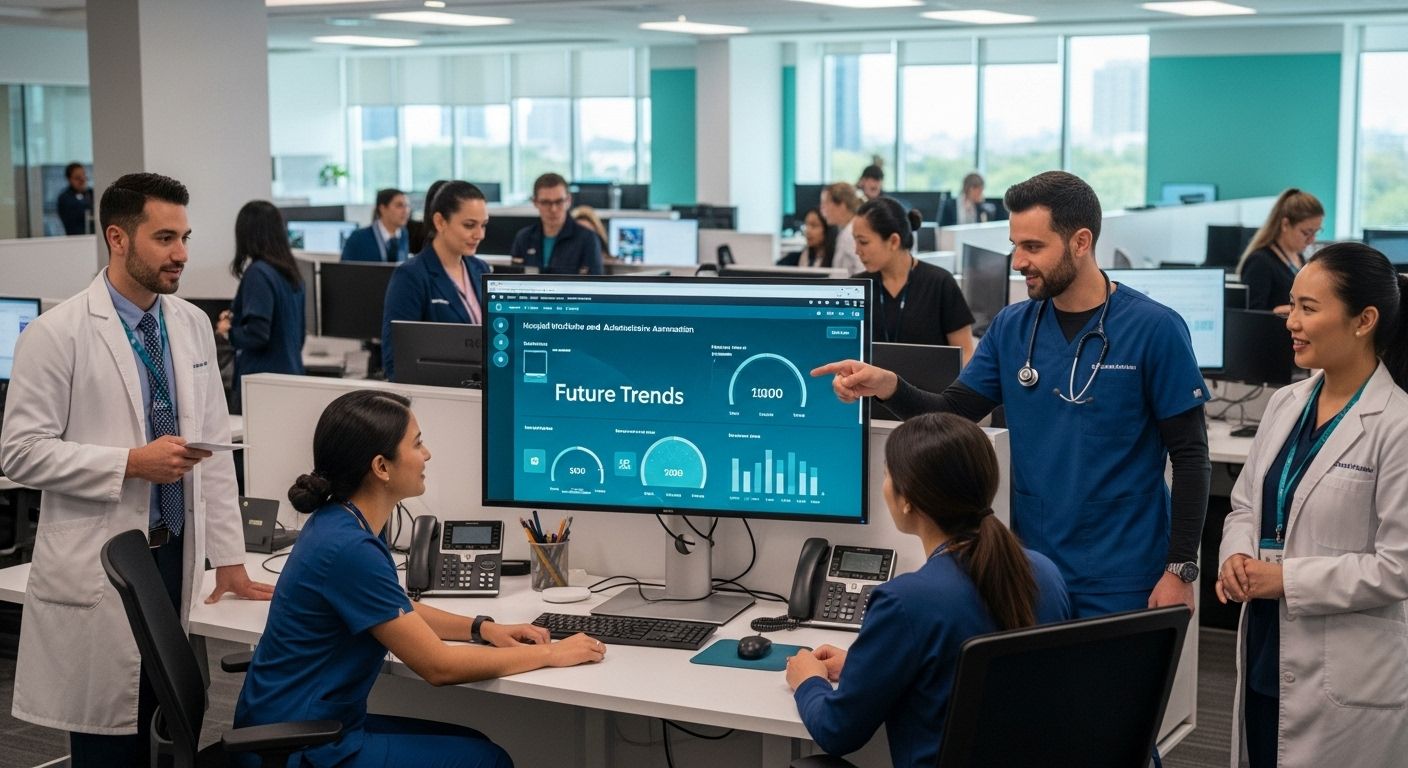
Frequently Asked Questions
What are the benefits of automation in healthcare administration?
Automation in healthcare administration can lead to significant cost reductions, enhanced operational efficiency, reduced billing errors, improved compliance and data security, and the freeing up of staff to focus more on patient care.
How much can healthcare organizations save through automation?
Healthcare organizations can reduce administrative costs by up to 60% by implementing automation in processes such as patient registration, billing, and insurance verification.
What are the main challenges of implementing automation in healthcare?
The main challenges include organizational change management, technical integration and data integrity, and ensuring that systems are designed with a human-centered approach to optimize workflows.
What future trends are expected in healthcare administration automation by 2025?
Future trends include the rise of AI-powered administrative intelligence, the development of unified medical practice management platforms, and increased reliance on data-driven decision-making to enhance operational efficiency and patient care.
Ready to Transform Your Healthcare Administration With Real Automation?
You just learned how outdated, manual workflows can trap your staff in endless paperwork, increase operational costs, and risk errors–all at the expense of patient care. If you have ever felt overwhelmed by the complexity of patient logistics or frustrated with slow, error-prone administrative processes, you are not alone. The good news is, solutions now exist that directly address these industry pain points through automation, intelligent scheduling, and secure communication.
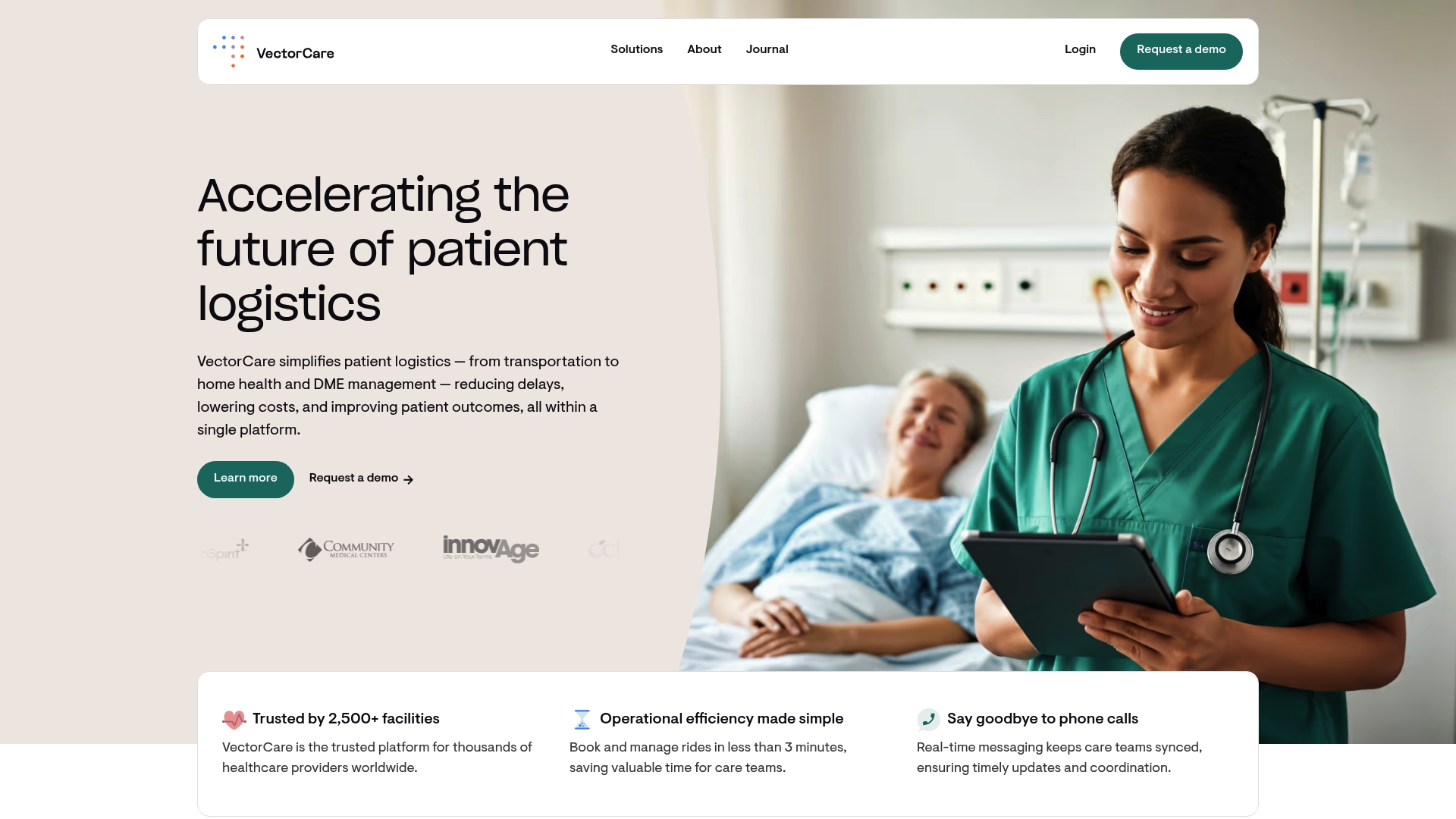
Now is the perfect time to act. VectorCare delivers an all-in-one, user-friendly platform designed to tackle exactly these challenges. Use real-time automated scheduling, intuitive no-code workflows, and AI-powered dispatching to cut administrative workload and help your team focus on patients–not paperwork. See how our solution is already reducing costs and improving care for hospitals and health agencies across the country. Find out how your organization can streamline patient transportation, home health coordination, and equipment logistics by visiting VectorCare’s digital platform. Experience the next level of healthcare administration and unlock greater efficiency before your competitors do.



